The Latest from TechCrunch |  |
| This Is Getting Ridiculous: Cat Amasses Half A Million Twitter Followers In 3 Months Posted: 16 May 2009 04:55 AM PDT
Tweeting eye-opening messages such as “and so I slept and then I walked around and then I slept again and then I saw a cobweb and OH FINE YES IT IS A SLOW NEWS DAY” in addition to “HOORAY THE ATTIC IS OPEN awesome view from attic window PLUS I PROVIDE CREEPY CAT SHADOW IN TOP WINDOW wooooooooooo look out socks above”, the cat has gone from a couple hundred to half a million followers in about 3 months, as the account’s TwitterCounter stats depict.
Meanwhile, Sockington (aka Socks aka Sockamillion) has his own website, and some members of the group of followers - which now even have their own name, Socks Army - are buying T-shirts with the animal’s tweets printed on them. The pet’s owner, Jason Scott, is even getting interviewed (repeatedly) and speaking at events about the Twitter account. Maybe it’s because I’m not really a cat person, but this is beyond me. People have been saying Twitter has jumped the shark for quite a while (that started around the time the startup launched, actually) and I’ve always felt those people were completely missing the point. But honestly, a cat attracting 500,000+ users with this nonsense is utterly incomprehensible from where I’m standing. Meow me your thoughts in comments. (Via Vincente) Crunch Network: MobileCrunch Mobile Gadgets and Applications, Delivered Daily. |
| Longer Queries Driving Down Ad Impressions? How About Bankrupt Advertisers? Posted: 16 May 2009 01:19 AM PDT
Comscore has a fascinating post today talking about the relative decline in paid search ad clicks when compared to search query volume in the U.S. Search queries are up 68% in the last year, but paid clicks are up only 18% in the same period. Comscore says the reason for the decline is that there are less search queries that show ads, and proposes that a reason for less ads is that searches are getting longer, up from an average of 2.8 words per query a year ago to just over 3 today. Comscore says: “And this apparently reduces the likelihood that an advertiser has bid to have his/her ad included in the results page from these longer queries, due to paid search advertising strategies that limit ad coverage, such as Exact Match, Negative Match, and bid management software campaign optimization.” Yeah I’m not buying that. The reason there are less ads on search results, I believe, is that there are, simply, less advertisers. Far less. Big spenders, the category leaders, are just gone. Sharper Image, Wickes Furniture, Levitz, Foot Locker, Wilson’s Leather, Ann Taylor, Zales, Mervyn’s, Macy’s, Circuit City and a ton of other retailers are either shutting down entirely or closing lots of stores. And more are on the way. All of these companies used to spend tons of money on paid search ads. Those budgets don’t exist any more. Efficient Frontier says of Q1 2009: “Search engine spending was down overall by 13% YOY and 3.3% Q/Q. The relationship between spending and ROI trends shows that advertisers continue to adjust their budgets to compensate for the economic downturn and to improve ROI. Monthly spend trends indicate that the additional decline in search engine spending in Q1 2009 was directly linked to the decline in ROI between November 2008 and January 2009. As ROI continued to decline, advertisers continued to cut their budgets in an effort to become more efficient.” and “CPCs are down across the board by 19% YOY and 13% Q/Q indicating that the entire marketplace is deflating as advertisers cut budgets and spend less. On a Q/Q basis, CPCs have declined by 14% on Google Search, 7% on Google Content, 28% on Microsoft Live Search, and 16% on Yahoo Search in Q1 2009 over Q4 2008.” I agree with Comscore that the main driver for the decline in ad coverage are improvements in ad targeting, particularly by Google. But the secondary driver, it seems to me, has nothing to do with query length. Perhaps it’s simply because so many advertisers are no longer advertisers. Drawing a line from that to less ad impressions is fairly straightforward. Crunch Network: CrunchBoard because it’s time for you to find a new Job2.0 |
| Digg Chief Architect Joe Stump Teams With Social Thing’s Matt Galligan To Found Crash Corp. Posted: 16 May 2009 12:19 AM PDT
It turns out Stump has teamed with Matt Galligan, who founded Social Thing and sold it to AOL last August. Big company life wasn’t for Galligan, he said in a phone interview this evening. “I’m an ideas and products guy, and needed to try something new.” So what’s the new company? It’s Crash Corp., a “Alternate Reality Mobile Gaming” startup. Their games will mix the real world with fictional story lines - expect the first title later this year on the iPhone. They’ll also build on other mobile platforms, Galligan says. Galligan, who leaves AOL at the end of this month, will be CEO of Crash Corp.; Stump takes the CTO role once he leaves Digg full time in June. The company, which will have dual offices in Boulder and San Francisco, has yet to raise funding, Galligan says, but they’re starting to pitch angels and venture capitalists now. My guess is they’ll be funded in short order. One thing to note: Stump has clearly been working on Crash Corp. for at least a few months. On March 14 he said in a now deleted blog post (cached version here) that the company would launch classic games against your friends on the iPhone using Facebook connect. It sounds like it has evolved significantly since then.
Update: From Galligan regarding the classic games: “Those apps are definitely still being released, however, not under the Crash Corp name. After Joe asked me to get involved, we decided it was best to move away from the board games, so we put up the splash page on the site, and will be moving the board games to a new company name, and spinning those out. They are almost ready to hit the app store…” Crunch Network: CrunchBase the free database of technology companies, people, and investors |
| Posted: 15 May 2009 07:57 PM PDT
We're hosting a party at Beijing Bookworm, May 20, the evening before the CHINICT conference begins. Tickets are available here. Capacity is extremely limited and we’ve had a lot of demand for this event, so please only sign up if you plan on coming. The party is being organized by my China researcher and traveling companion, Tom Limongello. For more details, releases of future tickets or questions, follow him on Twitter. Crunch Network: CrunchBase the free database of technology companies, people, and investors |
| Gambit: Facebook Users Have Deeper Pockets Than Their MySpace Counterparts Posted: 15 May 2009 06:28 PM PDT
Gambit, a payment engine that powers the microtransactions for a number of popular social network apps, is looking to help shed some light on the matter. Since launching to the public last January, the company has grown to seeing over 20 million uniques a month and has racked up a number of notable clients, including SmallWorlds, Facebook’s Friends For Sale, and Playdom, which is currently one of MySpace’s leading application developers. We asked the company (which also blogs about the industry) to pull together some data that was representative of the trends it was seeing across Facebook and MySpace, and the results are quite interesting, if not terribly surprising. The data comes from two applications that Gambit considers to be “very comparable” games, one from each social network. But it comes with two caveats: it only includes information about users who are actually driving revenue either through direct payments or offers (in other words, it neglects to take into account any advertising revenue) and the figures come from only one data point. That said, Gambit says that the stats below are representatives of the trends it is seeing across its entire platform. 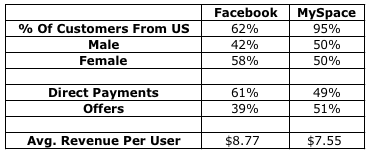 The first stat, which measures the amount of payments to come from the US vs international audiences, isn’t surprising at all. Facebook is seeing huge growth internationally (where MySpace continues to struggle), so far more of Facebook’s transactions come from abroad than they do on MySpace. The data also indicates that Facebook users are more likely to engage in direct payments (submitting money via credit card or services like PayPal) than they are through lead-generation offers (which invite users to try out a new service), while MySpace sees about an even split. Perhaps the most interesting point is the average revenue per user being earned by applications on Facebook and MySpace. I’ve previously heard that MySpace users were more valuable than Facebook users, but Gambit’s data contradicts this, at least for users who are engaging in microtransactions and offers (it’s possible that MySpace apps can drive more revenue through advertising, which isn’t measured in this data). Still, as micro-transactions become more popular this is definitely something developers are going to keep in mind - if you can convince a user to get out their wallets, they’re likely to pay more money on Facebook than they are on MySpace. Crunch Network: CrunchBase the free database of technology companies, people, and investors |
| Apple Is Indeed Talking About Opening iPhone Background Tasks Posted: 15 May 2009 04:15 PM PDT
Earlier today, Dan Frommer of Silicon Alley Insider cited sources in the mobile industry saying that Apple was serious about allowing background applications. John Gruber of Daring Fireball backed this up, saying he heard something similar from a decent source a few months ago. I’ve just spoken with a trusted source who confirmed the news as well. Basically, my source says that while this is in no way a done deal yet, Apple is definitely trying to come up with a way to offer background support for third-party apps. They went on to note that while Apple may have something to say about it at WWDC, it’s very unlikely that any solution would be ready at that time, and could be a situation similar to how Apple announced Push Notification at WWDC last year but said it was coming in a few months (which it later was delayed until iPhone 3.0). And it’s entirely possible that Apple won’t even have anything to say about it at WWDC as it’s still believe to be in the relatively early planning stages. All that is for sure is that Apple is telling some people that it is very aware of the community’s desire for background tasks and that it thinks it may have a solution to offer on the horizon. The reason Apple is being careful about this is because if it fully opened the iPhone to background tasks, the device’s excellent user experience would be threatened on a couple fronts. First, there’s a security concern about third-parties pushing and pulling data constantly to and from the device. My source believes Apple would likely separately approve apps for background support, but wouldn’t necessarily limit the offering to a handful of special apps.
Apple’s solution for this would likely be to limit the number of third-party apps that could run in the background at once, says my source. This is consistent with the other reports on the matter. And the new iPhone hardware is likely to have a better processor and more RAM, which would alleviate system strain, so it’s also possible these background apps would only be possible with the new hardware. So why is Apple talking about this now? Well one part may be the new hardware that should be coming shortly, but another is undoubtedly the imminent launch of the Palm Pre.
Of course, there’s a lot of talk about how the Pre’s webOS platform was constructed specifically around the idea of running multiple applications at once, the iPhone’s OS was not. But I think even limited third-party background support would be enough to satisfy most users. If I could just say, listen to Pandora, while also surfing the web, I’d be a happy man. There has been talk about third-party application background support before, and I’ve heard whispers in the past as well. And while my source today made it very clear that it’s entirely possible Apple will scrap its plans completely if it can’t come up with a good solution, it seems pretty clear that we’re closer than we’ve ever been to the possibility of third-party background tasks on the iPhone. Crunch Network: CrunchBoard because it’s time for you to find a new Job2.0 |
| FBI Adds Facebook, YouTube, Twitter Profiles. MySpace Completely Dissed Posted: 15 May 2009 03:21 PM PDT
They’ve now got profiles on Facebook, Twitter and YouTube profiles are highlighted. They even have billboards up in Second Life. But nothing is mentioned about MySpace. Except that you can add FBI widgets to “social media websites such as Facebook, MySpace, and Blogger.” Given all the attention the Attorneys General have given MySpace over the years you’d think it would be the first place they’d stake out and infiltrate. But as of now, they’ve got no official presence there. At least, none that they’ll admit to. A search on MySpace, after you work through the ridiculous advertising clutter, shows nothing. Probably the only thing MySpace hates more than getting too much government attention is this - getting completely ignored while fast growing competitors get all the attention. Update: From Jonathan Cox at the FBI - “We have a widget that works on MySpace, but nothing formal yet. Its a long vetting process and I have so many government rules to follow it would make your head spin. This is just the beginning though. I’ll keep you posted as things progress. Thanks.” Crunch Network: CrunchBase the free database of technology companies, people, and investors |
| Time Makes A List Of Tech Failures, Microsoft Makes It Twice Posted: 15 May 2009 02:51 PM PDT
Time Magazine recently published a list (completed by 24/7 Wall St.) of the “Top Ten Biggest Tech Failures Of The Past Decade.” Microsoft Vista, Microsoft Zune, Gateway, YouTube and the Segway all made the list. Time said that 24/7 Wall St. evaluated both start-ups and products that were “widely recognized,” and were available to anyone in the world. Time had a couple other qualifications to make the list including the rule that the product/company had to have the potential of bringing billions of dollars of revenue to its owner. Here’s the list: 1. Microsoft Vista Most of products/companies on the list are spot on, like Zune and Vista. However, I don’t see how YouTube, the largest video site on the web, is truly a failure. Yes, it’s not profitable yet and who knows when it will be. But Google only bought the video site a few years ago, and I think it’s too early to call this one a failure. Crunch Network: CrunchBase the free database of technology companies, people, and investors |
| Fennec (Firefox Mobile) Alpha 1 For Windows Mobile Goes Live Posted: 15 May 2009 12:45 PM PDT
After the slightly shaky launch of their ultra-early milestone release, Mozilla is back with more Fennec (otherwise known as “Firefox Mobile”) goodness. This morning, the company began distributing Alpha 1 of Fennec for Windows Mobile. As with all Alphas, this release is by no means intended for every day use by the general public, but it gives us a sneak peak at what’s to come. Crunch Network: CrunchGear drool over the sexiest new gadgets and hardware. |
| VIP E-Commerce Service Geelbe Raises $1 Million Round, Eyes Latin-American Expansion Posted: 15 May 2009 12:29 PM PDT
The company is actively looking to expand its VIP shopping operations to other Latin-American countries, starting with Mexico first and Brazil later this year. The company had earlier raised $300,000 from a group of angel investors. The model is simple but extremely powerful, as European startups like Vente-Privee, PrivateOutlet and BuyVip have already proven. The basic principle is to fulfil supplier's needs to quickly sell excess stock via the internet, without harming the brand's image or diverting revenue from other distribution channels. To do this, services like Geelbe try to attract an select community of buyers on an invite-only basis, and help brands sell that extra stock to their members at reduced prices (with discounts amounting up to 70%), only for a limited period of time and without any of the disadvantages cited above. Geelbe is considered to be the first significant web-based outlet of this kind in Latin-America, so it has the first-mover advantage and the momentum sorely needed to make inroads in that market. If they do this the smart way and succeed in expanding into other countries quickly and without burning too much cash, it has a lot going for it, especially if it sticks around long enough for the economy to start picking up again. (Source: Denken Über)
Crunch Network: CrunchGear drool over the sexiest new gadgets and hardware. |
| According To Twitter, Prop 8 Was Overturned Before It Existed Posted: 15 May 2009 12:10 PM PDT
What’s happening is that everyone is retweeting the message with a link to an article in the LA Times saying that the gay marriage ban has been overturned. But those people aren’t looking at the date of the article. It was published a year ago, on May 16, 2008. Prop 8 passed in November 2008, so unless we’re in some kind of Lost-style time warp, nothing has changed. This incident highlights a downside of Twitter. While it’s great at disseminating information quickly, it’s just as good at disseminating false information quickly. And if a lot of people are saying it — as thousands are here — it must be true, right? Wrong. What’s worse is that the LA Times itself is to blame here. They tweeted out a link to the story earlier today, and deleted it. They’ve since issue a retraction — in the form of a tweet, naturally. Update: According to Danny Sullivan, before the LA Times tweeted out the old story, ABC News had a story about Prop 8 being overturned that people started tweeting out also.
Crunch Network: CrunchBase the free database of technology companies, people, and investors |
| Putting Wolfram Alpha To The Test: Not Super-Impressed (But Here Are 50 Invites) Posted: 15 May 2009 11:29 AM PDT
Wolfram Alpha is an early primitive. The new search engine that everybody is gushing over and that even Sergey Brin is keeping an eye on, is set to launch on Monday and may soft-launch as early as later today. If you can’t wait that long the first 50 TechCrunch readers to I’ve been putting Wolfram Alpha through the paces for the past few days and I come away impressed, but not super-impressed. Wolfram Alpha is obviously at a very early stage of development (hence the “alpha” in the name), and it does show a lot of promise. It is certainly not going to be another Cuil, the once-stealth search engine which fell flat on its face at launch. But given all the hype that is surrounding Wolfram Alpha’s launch, the already-brimming rivalry with Google, and the fact that it just bought a supercomputer to help handle its expected load, it needs to be evaluated seriously and without a handicap. When the company states on its blog that its algorithms “include some of the most sophisticated ever developed” it is helping to set expectations pretty high. Wolfram Alpha is not a regular search engine. It doesn’t scour the Web for data to return the best results. Rather, it ingests data into its own massive databases so that it can run the information through its own constantly-growing set of algorithms to “compute” the answers. These algorithms are based on computer scientist Stephen Wolfram’s Mathematicasoftware. When it does come up with an answer, it can be brilliant. Scientists, engineers, and math geeks are going to love Wolfram Alpha. It can do calculus, regression analysis, compute orbital paths and fluid dynamics, and call up detailed information about specific genes. But too often it doesn’t have the best answers for basic questions and searches. For instance, it doesn’t do so well with searches for people who are not famous. I tried a vanity search of my name, for instance, and it came back with the distance between Erick, Oklahoma and the town of Schonfeld in Saxony, Germany (5,248 miles).
A search for “techcrunch” came up with nothing. Company names work better for publicly traded companies. You get the stock price and financial data when you search for “Google.” A search for Facebook turns up Alexa data about the site such as pageviews and daily visitors (Alexa is not always the most accurate source for this sort of Web data, however). When I asked, “How much is Facebook worth?” it was comically flummoxed, responding: “Wolfram Alpha isn’t sure what to do with your input.” To be fair, nobody (person or computer) in the world knows the answer to that question.
How about when it does have an answer? I asked it “How fast does hair grow?” It came back with “0.4 mm/day.” It also gave me the answer in nanometers per second (5) and millimeters per year (100). It also knows the “distance between the moon and New York City” (250,842 miles right now), as well as the “Answer to Life, the Universe, and everything,” which is “42″ (as anyone who has read the Hitchhiker’s Guide to the Galaxy will tell you, as will Google).
Even when Wolfram does have an answer, it is not always the best one. For instance, a search for “new york state unemployment” brings up a 4.5 percent unemployment rate from 2006 (see screen shot above). That answer is completely useless if you want to know the current unemployment rate in New York State, which is 8.1 percent and which turns up as the first result on Google. I chose this search because Google recently added some basic structured data to searches for U.S. unemployment and population. Google pulls these results directly from the Bureau of Labor Statistics, whereas Wolfram can only compute information based on the data it has already ingested. When I do a search for “New York versus California,” Wolfram Alpha comes up with a wealth of trivia, including population, state capitals, the dates they joined the Union, their locations highlighted on a map, land area, highest points, lowest points, number of households, number of businesses, median household income, and more. All of this information is great, but is it the best information? Much of the data is from 2002. The population numbers are from 2006. Search for “New York state population” on Google and you get a July, 2008 estimate pulled straight from the U.S. Census Bureau.
Of course, Google doesn’t provide all of the other contextual data in one convenient search result, but its answer for that one variable is better. All Wolfram has to do, though, to beat Google is update its data, right? That is easy enough. It is already an amazing resource and it will only get better over time. But there is a question of scale and approach here. Wolfram needs supercomputers to “compute” its answers. It is not searching for answers that are already out there. Supercomputers are expensive and generally don’t scale cost-effectively. Beyond that is the issue of whether Wolfram can ingest enough data fast enough to always be up to date, versus finding the best, most current answer to any query on the Web. To put it another way, can Wolfram Alpha ever become smarter than the Web? That simply does not compute. Finally, it is not as though Web isn’t evolving as well. Wolfram needs to store all of the data it sifts through in its own databases because that is how it imposes structure on the data. The Web is messy and unstructured. Yet there is a general movement afoot to impose structure on the data found across the Web. Everyone from semantic search startups to Google itself is making the Web more computable by categorizing the information on it in a way that computers can understand and manipulate more easily. Of course, to the extent that happens, Wolfram Alpha can take advantage of it as well. In search, whoever can come up with the best answer wins. As promising as it is, that isn’t Wolfram Alpha yet.
Crunch Network: CrunchGear drool over the sexiest new gadgets and hardware. |
| MySpace Adds A Bottom IM Bar, Like That Other Social Network Posted: 15 May 2009 10:57 AM PDT
Starting today, users across the social networking site in English speaking countries (Canada, UK, Australia, New Zealand, Ireland and the US) will see a prominent bright blue bar across the bottom portion of their screens. On the right side of that bar resides MySpaceIM, the service’s instant messaging client. It works and looks exactly like Facebook’s integrated IM but the settings are a bit more accessible since they reside on the bar as well. And, to be fair, other services like Gmail have made this on-site chat in the lower right hand corner, a standard too. MySpace has confirmed the site-wide rollout today and says they had been beta testing it for a little while with Canadian users, and some users in the UK apparently also had access. Previously, the service had a downloadable IM client that worked with Skype. This onsite IM service doesn’t offer the Skype option — the two will work with one another though. Having a stand-alone client always seemed like an odd choice, as the point of these social networks is to keep everything integrated on the site. And though it was set in motion as a test before the change of power at MySpace, this is one of the first major changes to the site since new MySpace CEO Owen Van Natta took over. And interestingly enough, new COO Mike Jones previously founded Userplane, an online chat service, so he undoubtedly knows a thing or two about services like this. As with Facebook IM, you’ll be able to customize who can see you’re online and who cannot. You can also block certain users. And you can pop out IM into its own window. But my favorite feature may be the ability to collapse the chat bar by clicking the arrows all the way to the right. And that doesn’t boot you offline, it just puts your status in the lower-right corner and removes the screen-wide bar. The fact that this bar is screen-wide by default does seem a bit odd. Unlike Facebook, MySpace isn’t using this for anything else, such as applications. At least not yet. The IM bar will also not work with IE6, which I fully support as that’s the worst browser in the world. This bar will roll out to other countries over the next few months, MySpace tells us. You can find more details here.
Crunch Network: MobileCrunch Mobile Gadgets and Applications, Delivered Daily. |
| John Battelle Starts Searching For His Replacement At FM Publishing Posted: 15 May 2009 10:54 AM PDT
Federated Media Publishing is looking for a new leader. In a blog post today, founder John Battelle says after four years he is conducting an executive search to find somebody to “take it to the next level.” The blog advertising network is trying to branch out into something called “conversational marketing,” which it is also trying at the same time to invent. After shopping the company around last year and not finding a buyer willing to pay his price, Battelle decided to raise $50 million instead. With those investors comes pressures for growth and profits. Battelle Last year, FM distributed $25 million in revenues to its network of blogs. Assuming a 50/50 split that would have generated $25 million in revenues for FM, but it also has other sources of revenues from its newer conversational marketing campaigns, events, and other businesses. Crunch Network: CrunchBase the free database of technology companies, people, and investors |
| Play.fm Lets You Tune Into An Impressive Collection Of DJ Sets Online Posted: 15 May 2009 08:24 AM PDT
Here’s how the young company pitches the service (it’s hard to categorize in a short summary):
Ok, that didn’t really help either, so let me give it a shot. What Play.fm wants to be is a place where people can come listen to professionally produced DJ sets, live recordings and radio sessions that are uploaded primarily by the artists themselves, targeting a mainstream audience. It’s not a place for users to upload or stream individual tracks or create and share digital mixtapes, but rather acts as a central hub where people can discover, stream and buy new music mixed together or recorded live by professionals. In turn, the uploaders get a comprehensive set of audience statistics and hopefully some visibility. This also opens up some interesting opportunities for labels, agencies, bookers and event organizers. To a degree, you could compare Play.fm to services like SoundCloud and Fairtilizer, although those are targeted more to a professional audience at the end of the line as well, and are mostly centered around individual tracks rather than DJ sets or content recordings. Play.fm is also up against the plethora of websites that host and play DJ sets (mostly limited to one genre) in an online radio station style and usually based on a paid subscription service. Non-uniqueness notwithstanding, Play.fm does a really good job at serving their target audience with an on-demand streaming catalog of over 12,000 DJ sets and live sessions already, and does a great job in offering a satisfactory user experience to listeners. The audio player displays sound bites in wave-form (again taking a page from services like SoundCloud), which means it enables the user to set time markers in order to identify and inquire about tracks he or she may not know yet, wiki-style. That makes the service incredibly addictive, at least for people like me. Business model, you ask? Advertising, evidently, but also music retailing. See, each track that gets identified by Play.fm (1.4 million tracks so far) can be purchased via what the startup refers to as the Meta-Shop, which essentially pulls together pricing, track quality and purchase locations from 5 different online music shops, with 20 more on the way. Play.fm picks up a commission on all sales that are generated by people who click through to the actual online stores and complete the purchasing process. Color me impressed, but do give it a whirl yourself and let us know what you think, too.
Crunch Network: CrunchBase the free database of technology companies, people, and investors |
| MXP4 Raises $2.7 Million For Interactive Digital Music Technology Posted: 15 May 2009 08:20 AM PDT
MXP4, a startup that creates interactive tools that allow artists and producers to let listeners “play” and interact with digital music, has raised $2.7 million in funding from Sofinnova Partners and Ventech Capital. The Paris-based company previously raised $6.5 million in funding from the same investors in 2007. Launched in 2007, MXP4, which offers a digital format to music that rivals the MP3 format, lets users remix tracks, add images and video content, add music layers and more. The startup is also replacing founder and CEO Gilles Babinet (who will become the chairman of the board) with Albin Serviant, former executive vice president and general manager of Vivendi Mobile Entertainment. Crunch Network: MobileCrunch Mobile Gadgets and Applications, Delivered Daily. |
| Posted: 15 May 2009 08:10 AM PDT  We've all been pretty upset about Flash on the iPhone. It's been promised and we've pleaded to the heavens above for sweet release but still Apple laughs at our wasted prayers and tears. But there is a solution. If you absolutely must have Flash on your iPhone, Tim Consolazio recommends trying an advanced version of VNC. First, some background: VNC is a console/screen sharing system that lets you log into and use other machines over the Internet. You can basically share your screen with others along with your mouse and keyboard. You can try out VNC solutions for the iPhone right now and these currently let you connect to your remote PC or Mac and use it just as if you were sitting in front of the keyboard. This would also let you, theoretically, run Flash on your iPhone or Touch, albeit inside a browser. We've all been pretty upset about Flash on the iPhone. It's been promised and we've pleaded to the heavens above for sweet release but still Apple laughs at our wasted prayers and tears. But there is a solution. If you absolutely must have Flash on your iPhone, Tim Consolazio recommends trying an advanced version of VNC. First, some background: VNC is a console/screen sharing system that lets you log into and use other machines over the Internet. You can basically share your screen with others along with your mouse and keyboard. You can try out VNC solutions for the iPhone right now and these currently let you connect to your remote PC or Mac and use it just as if you were sitting in front of the keyboard. This would also let you, theoretically, run Flash on your iPhone or Touch, albeit inside a browser. |
| Google Friend Connect Adds Recommendations Gadget Posted: 15 May 2009 07:48 AM PDT
Google has rolled out a new recommendations gadget that allows sites that use Google Friend Connect to see which parts of their websites their visitors like best. Publishers can create the gadget on Google Friend Connect’s site and then embed the code into their sites. Once the gadget is embedded, members can then recommend the content they like, anything from a whole page to a single photo by clicking a “recommend it” button that accompanies any piece of content on the site. It’s useful for both publishers and visitors, because they can easily see what parts of a site are the most popular. The items with the most votes will rise to the top of the list within the gadget, making it easier for others to find those features even if they are buried deep within a site. Website owners can also see which members have recommended a given item and learn more about them. Google Friend Connect, which is the company's own data portability effort, was opened up for all websites in the beginning of December 2008, right when Facebook made Facebook Connect generally available as well. To compete with Facebook Connect, Google has been steadily adding useful features to ramp up its Friend Connect product, including comment translation, a Social Bar, and integration with Google’s weblog publishing service Blogger. Here’s a video showing how the gadget works: Crunch Network: CrunchGear drool over the sexiest new gadgets and hardware. |
| Random House Shuts Down Kindle Text-to-Speech For Their Titles Posted: 15 May 2009 07:39 AM PDT  And so it begins: Random House has switched off Kindle Text-to-speech by default, angering educators and advocates for the blind in the process. Forty titles have been shut down including books by Stephen King and Toni Morrison. Interestingly, Random House can start this process even after you've purchased the book on the Kindle, essentially shutting off functionality on products you already "own." As we've said before: text-to-speech is not an audiobook, the Authors Guild is wrong, and even Wil Wheaton thinks this whole thing is dumb. Once Wesley Crusher is against you, you need to rethink your priorities. And so it begins: Random House has switched off Kindle Text-to-speech by default, angering educators and advocates for the blind in the process. Forty titles have been shut down including books by Stephen King and Toni Morrison. Interestingly, Random House can start this process even after you've purchased the book on the Kindle, essentially shutting off functionality on products you already "own." As we've said before: text-to-speech is not an audiobook, the Authors Guild is wrong, and even Wil Wheaton thinks this whole thing is dumb. Once Wesley Crusher is against you, you need to rethink your priorities. |
| Yuuguu To Add Skype Calling To Its Screen Sharing Service Posted: 15 May 2009 06:35 AM PDT
That obviously means that as well as chatting via IM during screen sharing you can make free and low cost VOIP calls to your interlocutor. However, there is a drawback as Skype-based screen sharing (as opposed to using IM from another platform) is only Mac-based and will be one to one. But unlike most screen sharing applications, Yuuguu does not require participants to download any software - only the host needs access to Yuuguu. Participants get sent a standard web link that will allow them to view the host’s screen. Crunch Network: CrunchBase the free database of technology companies, people, and investors |
| Blacksocks.com: An Infinite Supply of Black Socks Posted: 15 May 2009 06:32 AM PDT  Thank the maker that we live in an age when we can order anything online and have it delivered right to our door. Even better, subscription services free us form the tedium of having to remember to actually go buy stuff. Today, friends, I'm pleased to let you know that the magic of Internet shopping and the convenience of subscription services have merged together for the benefit of your sock drawer! Blacksocks.com makes sure that you're regularly stocked with fresh, black socks! Click through for a gripping video review! Thank the maker that we live in an age when we can order anything online and have it delivered right to our door. Even better, subscription services free us form the tedium of having to remember to actually go buy stuff. Today, friends, I'm pleased to let you know that the magic of Internet shopping and the convenience of subscription services have merged together for the benefit of your sock drawer! Blacksocks.com makes sure that you're regularly stocked with fresh, black socks! Click through for a gripping video review! |
| Billing Revolution’s ‘Single-Click’ Mobile Payment Service Now Accessible Via SMS Ads Posted: 15 May 2009 06:00 AM PDT
Billing Revolution, a startup that offers a single-click billing and payment service for commerce transactions on mobile phones, is partnering with MoVoxx, a mobile advertising network that leverages SMS messaging, to place commerce ads on mobile phones. MoVoxx advertisers can implement Billing Revolution’s one-click billing and payment service in SMS advertisements so that consumers can purchase products directly from the ads received on their phones. MoVoxx serves short, interactive ads under opt-in SMS messages for retailers such as Kraft, Sears and 1-800-Flowers. Founded in 2008, Billing Revolution is trying to streamline mobile purchases by offering an easy- one click solution (similar to Amazon’s feature). Once consumers are ready to buy something from the Web from a vendor that employs Billing Revolution's service for payment, they are taken to Billing Revolution's purchase page where they input credit card information from their phone. Once complete, Billing Revolution automatically sends an SMS receipt to their phone, which contains a link. After clicking that link, authentication is complete and with all future purchases, consumers will need only to click 'buy' for a transaction to be completed. Billing Revolution charges a 3.5% transaction fee plus 50 cents per transaction. With those fees it’s tough to take a cut from micropayments, which are already small to begin with. This is a particular problem with mobile applications,, because an app developer wouldn’t want to take a 50 cents cut on a song or app that was sold for $1 or $2 on the iTunes app store. Billing Revolution maintains that the service is targeted more towards substantial purchases like movie or event tickets. And or larger purchases, Billing Revolution’s service could turn out to be profitable for e-commerce businesses who have mobile transactions. Mobile carriers generally take a revenue share in e-commerce transactions taking place on mobile devices. In some cases this can be as high as 60%. With commerce powered by Billing Revolution, retailers can bypass large carrier fees (but still have to pay the 3.5% percent and 50 cents transaction fee).  Crunch Network: CrunchGear drool over the sexiest new gadgets and hardware. |
| Posted: 15 May 2009 02:52 AM PDT
The blog post, titled ‘Navigating the storm’, speaks volumes about Yasuda’s sentiments on the music industry in general, even if they are not all that outspoken. A short excerpt:
The biggest change mentioned in the post is the following: the music Blip.fm will be streaming from now on will primarily be coming from Imeem, which means there will be some limitations to what can be streamed henceforth. This decision affects Blip.fm users not located in the U.S. in a big way, which basically means about 80% of its current user base is now using a trimmed down version of the service. The other changes are:
Yasuda says he can’t go into detail about why the changes were made exactly, so we can only speculate about it at this point. The big elephant in the room here is that most of Blip.fm’ music catalog was being sourced from SeeqPod, and by now we know what kind of trouble that company is in (although they might still be saved by Microsoft). He does mention that the startup has engaged in talks with ‘lawyers, artists, people from the labels and aggregators’ besides software developers, publishing companies etc. to ensure the service stays alive and can keep adding features. I’ve contacted the Blip.fm team for more information and will update this post if and when they get back to me. Looking at their Compete stats (which usually underestimate actual traffic for websites), Blip.fm actually appears to have been growing nicely the past few months. Compete pegged monthly unique visitors going to the service at about half a million in April. We should also note Fuzz, the initial company behind the Blip.fm service for which they raised an undisclosed amount of angel funding back in February 2008, recently sent its music destination site / social network Fuzz.com to the deadpool to focus completely on Blip.fm, making the whole situation extra painful for the 4-headed team. Too soon to put Blip.fm on deadpool watch, but beyond a doubt its future is now less bright than it was before. Crunch Network: MobileCrunch Mobile Gadgets and Applications, Delivered Daily. |
| Video: Our Full Walkthrough Of The Color Coated COOL-ER Ebook Reader Posted: 14 May 2009 11:29 PM PDT  We've gotten our hands on the COOL-ER, a new Ebook reader coming out in two weeks that's sporting a (relatively) low $250 price tag and a case that looks like an over-sized iPod Nano (it's also coming in 8 Applesque colors). Interead, the small startup that built Cool-er, is obviously trying to bring Ebooks to a new market, shunning some of the features seen on the Kindle in favor of a lower price-point and a broader appeal. And it just might work. Unlike Amazon's device, Cool-er has no wireless connectivety, so you can't buy books online or browse Wikipedia, nor does it have Amazon's oddly controversial text-to-speech functionality. But it's also over $100 cheaper than the Kindle, and while some other devices (like the Sony Reader) are in the same price range, Cool-er also has a very unique look - I'm sure many people (especially younger crowds) would rather sport a colorful Ebook reader than the beige and black color schemes that currently dominate the market. We've gotten our hands on the COOL-ER, a new Ebook reader coming out in two weeks that's sporting a (relatively) low $250 price tag and a case that looks like an over-sized iPod Nano (it's also coming in 8 Applesque colors). Interead, the small startup that built Cool-er, is obviously trying to bring Ebooks to a new market, shunning some of the features seen on the Kindle in favor of a lower price-point and a broader appeal. And it just might work. Unlike Amazon's device, Cool-er has no wireless connectivety, so you can't buy books online or browse Wikipedia, nor does it have Amazon's oddly controversial text-to-speech functionality. But it's also over $100 cheaper than the Kindle, and while some other devices (like the Sony Reader) are in the same price range, Cool-er also has a very unique look - I'm sure many people (especially younger crowds) would rather sport a colorful Ebook reader than the beige and black color schemes that currently dominate the market. |
| About Those iPhone App Store Revenue Numbers Posted: 14 May 2009 09:06 PM PDT
First, I’m not convinced these numbers are sound. While the author, Jeremy Liew, makes some good calculations, the numbers are still drawn largely from a survey. He did this because Apple doesn’t release actual numbers for App Store sales beyond the big numbers like a billion downloads. But Apple has given out what are probably better numbers than the survey results numbers over the past year. For example, back in August, none other than Steve Jobs himself said the App Store was pulling in $1 million a day in sales. Now, that was a long time ago, and the App Store has grown tremendously since then, but let’s go with that figure for argument’s sake. $1 million a day means that Apple would be making $300,000 a day (its 30% cut). Extrapolated out over 10 months (the approximate age of the App Store), that would be about $90 million. That’s already double Liew’s high-end estimate. And Jobs would not throw a number like this out there lightly. Apple, if anything, likes to set expectations low and exceed them. For Jobs to throw out that figure and say that the App Store could one day be a billion dollar a year industry, to me means that he thinks it will at least be that big of a business. Yes, it seems likely that the average price of apps have fallen since August given the rise of $0.99 apps, and probably that the ratio of free-to-paid apps has grown, but that’s why the daily sales angle is an interesting one to look at. No matter what ratios changed, there are also a ton more apps being downloaded — both paid and free — than there were in the first 30 days. And so if anything, this $1 million a day sales mark is probably low compared to what it’s at now.
But even at $100 million, the App Store would still be a small drop in Apple’s bucket when it comes to revenue. But what Liew only indirectly hints at in his report is that this is what Apple has always been expecting. Since day one of its unveiling, Apple has said that it did not plan to make a lot of money off of the App Store. Sure, that may have been slightly disingenuous (again, Apple likes to set expectations low), but Apple’s stated rationale behind taking a 30% cut was to be able to keep the App Store up and running — not to make money. Apple is a company notoriously mindful of its high margins, so why doesn’t it care about making a lot of money with the App Store? Dan Frommer of Silicon Alley Insider has this exactly right: it’s because the App Store is one of the, if not the, key driver of two products that are very high margin: The iPhone and the iPod touch. The App Store is based around the exact same model as its parent iTunes Store, which sells music at a very small markup in order to sell iPods. I don’t think I have to explain how well that has worked. Another thing to think about is even with the success of the iPhone, Apple still has a very small percentage of the mobile market. Depending on the moves it makes over the next couple of years — namely getting into China and getting off of its exclusive AT&T deal in the U.S. — this percentage could grow by leaps and bounds. When that happens, App Store sales will continue to grow and thus, revenue from the App Store will continue to grow. Remember, the App Store is still not even a year old, and for much of that time, the number of iPhones and iPod touches in the market was nowhere near what it is today. The download pace is quickening, and the revenue pace should be as well. Yet another variable is that Apple takes $99 a year from developers who develop for the App Store. There are tens of thousands of those. Again, not a huge chunk of money, but it all adds up. But the biggest thing that these numbers draw attention away from is the true potential of the App Store. The reason for that is, it’s not here yet. When in-app payments launch with the iPhone 3.0 software this summer, the sky could literally be the limit in terms of how much both developers and Apple could make off of this. Yes, Apple will still take a 30% cut of these sales. And given that it has to do basically nothing more than it’s already doing to get that extra 30% — it’s pure gravy. I think Liew’s numbers are well below the actual revenue numbers, but no matter if its $50 million, $100 million or $200 million, that’s not a huge amount of money for a company that has nearly $30 billion in cash in the bank. But going forward, that number is only going to increase both as the platform expands and as in-app purchases come into play. That’s not bad for a company that just wanted to make enough money to keep the App Store running. Crunch Network: CrunchBoard because it’s time for you to find a new Job2.0 |
| You are subscribed to email updates from TechCrunch To stop receiving these emails, you may unsubscribe now. | Email delivery powered by Google |
| Inbox too full? | |
| If you prefer to unsubscribe via postal mail, write to: TechCrunch, c/o Google, 20 W Kinzie, Chicago IL USA 60610 | |
 Ok, I dig
Ok, I dig 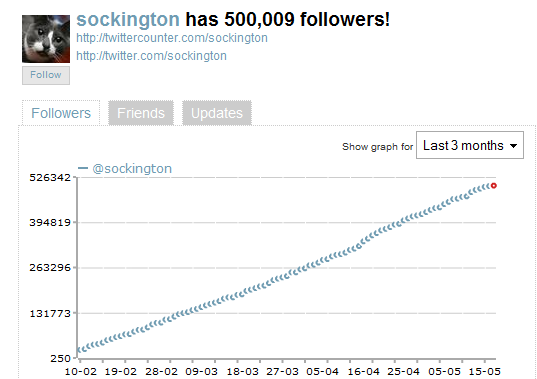
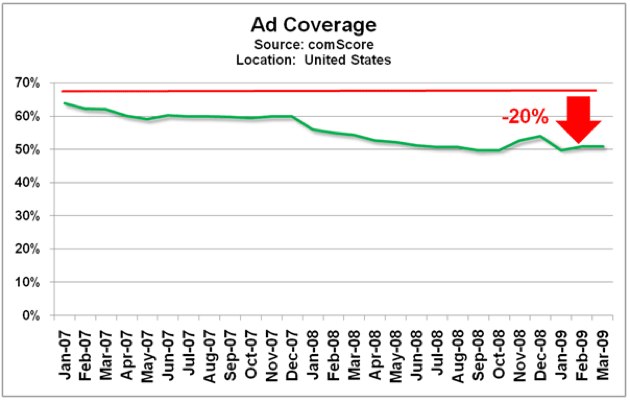
 It must be something in the air. Spring perhaps. But when high level employees start to leave perfectly good startups before a liquidity event, there’s usually something pretty important that they think they need to work on. A recent example is Twitter creator
It must be something in the air. Spring perhaps. But when high level employees start to leave perfectly good startups before a liquidity event, there’s usually something pretty important that they think they need to work on. A recent example is Twitter creator  You didn't think we'd come to China and not organize some kind of meet-up did you? Sillies!
You didn't think we'd come to China and not organize some kind of meet-up did you? Sillies! When it comes to the amount of money being made on social networks, it seems like nobody really knows what’s going on. Sure, we occasionally hear about
When it comes to the amount of money being made on social networks, it seems like nobody really knows what’s going on. Sure, we occasionally hear about  As great as the iPhone is, it has one glaring weakness: The inability to run third-party applications in the background. That badly cripples certain types of apps, such as those that do instant messaging, music streaming and location-based services.
As great as the iPhone is, it has one glaring weakness: The inability to run third-party applications in the background. That badly cripples certain types of apps, such as those that do instant messaging, music streaming and location-based services. 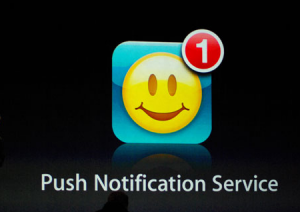 The second concern is the iPhone’s power and speed. Some users have been bitching about the device’s battery since day one — with third party applications constantly running in the background, the battery life would get much, much worse. Owners of the G1, the Android-powered phone that allows robust apps to run in the background, will know what I’m talking about. And background apps also eat up processing power. With some high-powered games that now run on the device, system resources are already getting heavily taxed, imagine running one of those with other applications also running.
The second concern is the iPhone’s power and speed. Some users have been bitching about the device’s battery since day one — with third party applications constantly running in the background, the battery life would get much, much worse. Owners of the G1, the Android-powered phone that allows robust apps to run in the background, will know what I’m talking about. And background apps also eat up processing power. With some high-powered games that now run on the device, system resources are already getting heavily taxed, imagine running one of those with other applications also running. Given that the Pre will be the first phone since the iPhone to use multi-touch and that Palm is made up of many
Given that the Pre will be the first phone since the iPhone to use multi-touch and that Palm is made up of many  The FBI is willing to do just about anything when it comes to tracking down bad guys. They
The FBI is willing to do just about anything when it comes to tracking down bad guys. They 
 We don’t often write about Latin-American startups (in fact, if you’re familiar with that market,
We don’t often write about Latin-American startups (in fact, if you’re familiar with that market, 
 There’s an interesting trending topic on Twitter right now:
There’s an interesting trending topic on Twitter right now: 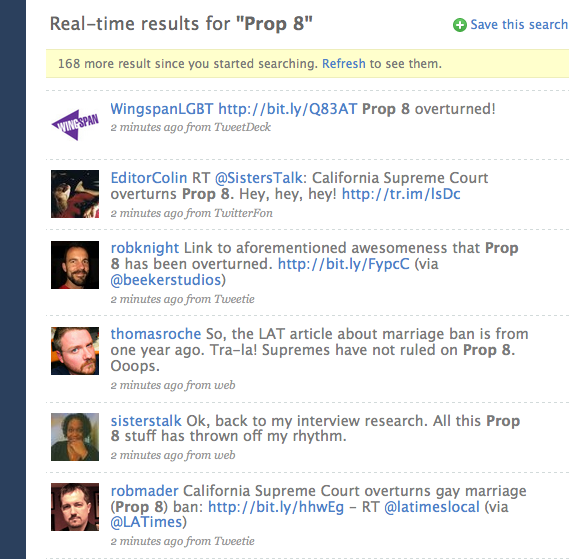
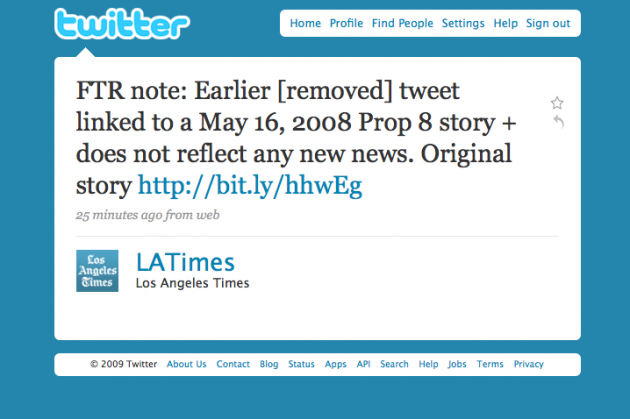
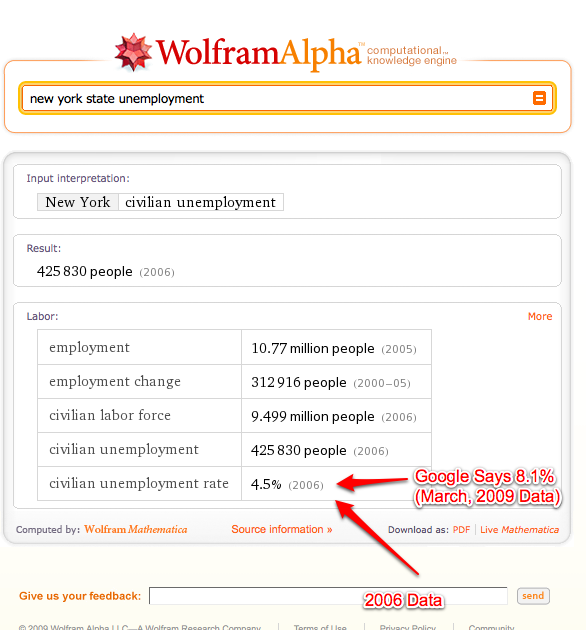

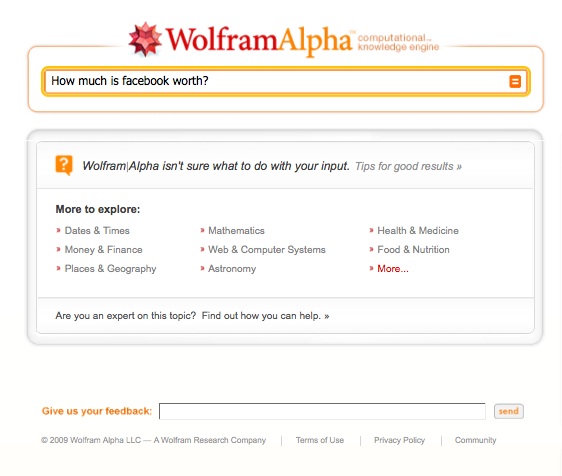



 I hate the bottom toolbar on Facebook. I simply never remember it’s there for things like applications and quick access to photos. But it is fairly useful as a place to store your IM buddy list so it’s mostly out of sight but still open. And that’s exactly what MySpace is now using it for.
I hate the bottom toolbar on Facebook. I simply never remember it’s there for things like applications and quick access to photos. But it is fairly useful as a place to store your IM buddy list so it’s mostly out of sight but still open. And that’s exactly what MySpace is now using it for.

 I’ve fiddled with the beta version a few times before, but I’m happy the Vienna, Austria-based startup is now ready to release its eponymous service,
I’ve fiddled with the beta version a few times before, but I’m happy the Vienna, Austria-based startup is now ready to release its eponymous service, 







 I don’t think it’s a stretch to say that Apple’s App Store has been more successful than even Apple ever imagined. It entered a market that had been completely controlled by carriers and handed the keys over to third-party developers to make their own apps. Just over nine months later, over 35,000 of those apps had been made which have been downloaded
I don’t think it’s a stretch to say that Apple’s App Store has been more successful than even Apple ever imagined. It entered a market that had been completely controlled by carriers and handed the keys over to third-party developers to make their own apps. Just over nine months later, over 35,000 of those apps had been made which have been downloaded  And there are other numbers that suggest this as well. Back in March,
And there are other numbers that suggest this as well. Back in March, 
No comments:
Post a Comment